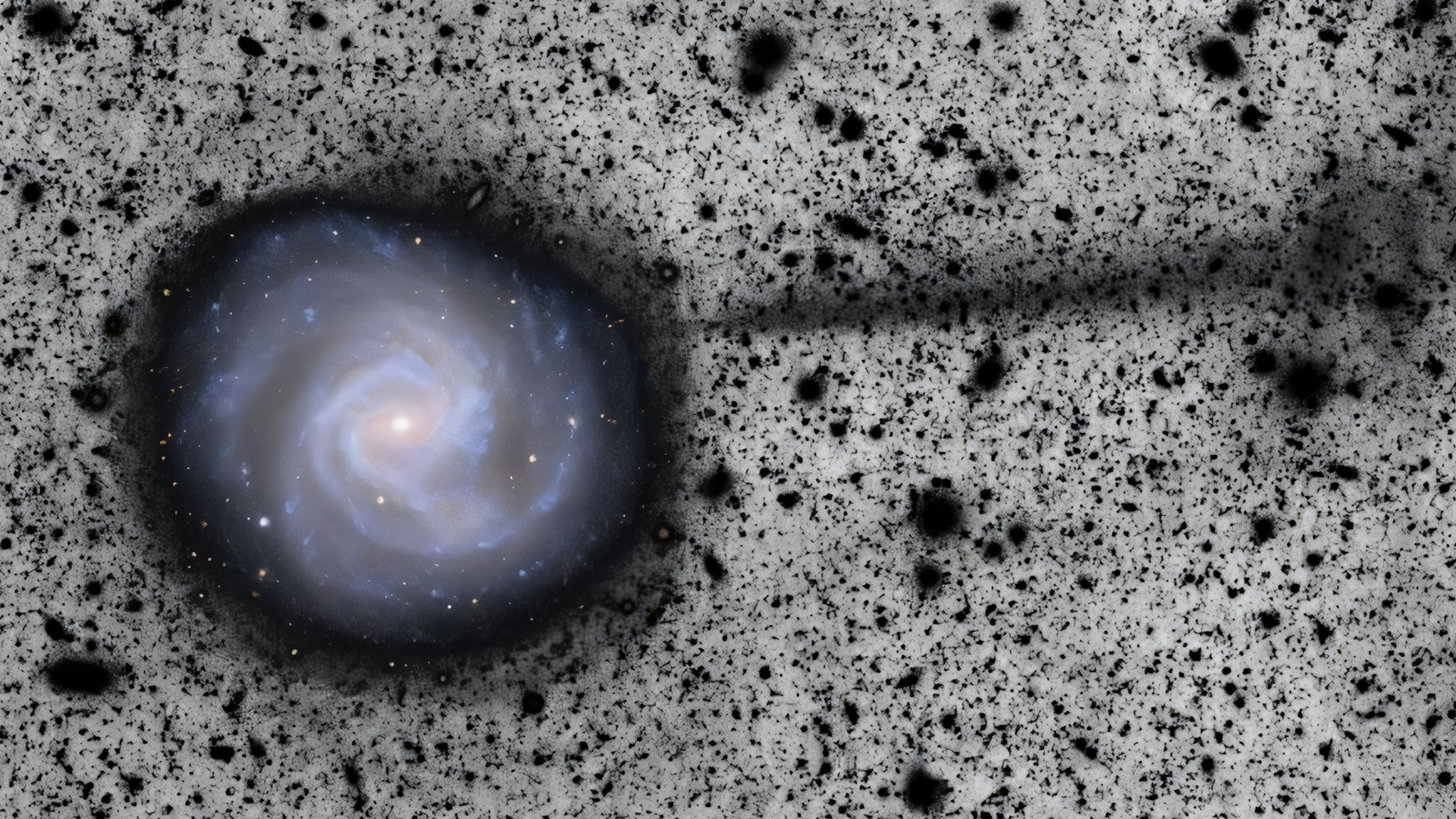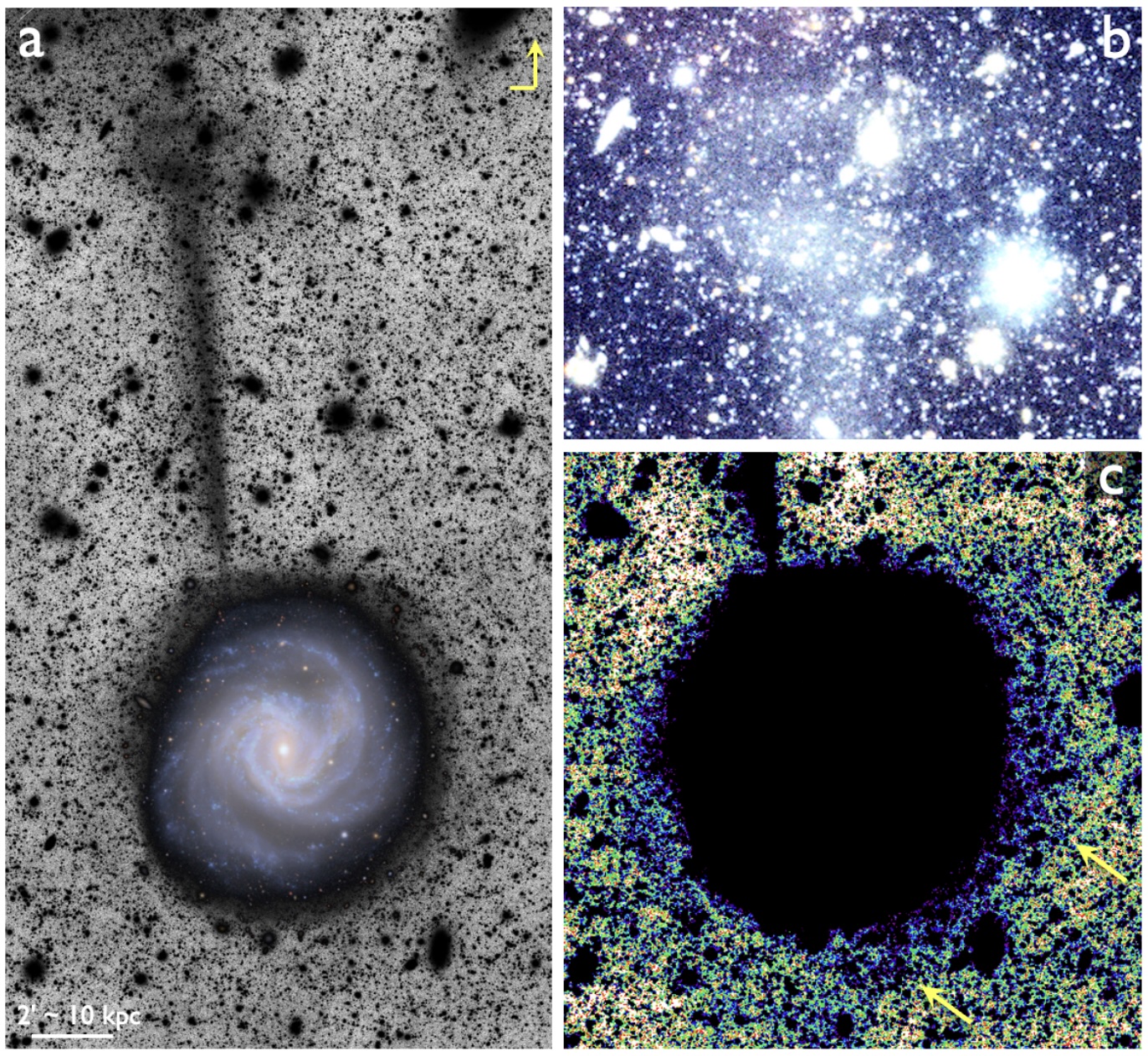First Vera Rubin Observatory image reveals hidden structure as long as the Milky Way trailing behind a nearby galaxy — Space photo of the week
First-light images from the Vera C. Rubin Observatory have revealed a 163,000-light-year stream of stars emanating from the M61 galaxy, suggesting a violent past.

What it is: Barred spiral galaxy Messier 61, AKA NGC 4303
Where it is: 55 million light-years away in the constellation Virgo
When it was shared: Oct. 28, 2025
Even before its full science operations have begun, the Vera C. Rubin Observatory in Chile has already helped astronomers find something remarkable. The observatory's first images, revealed in June, contained a deep view of the Virgo cluster, the closest and best-studied cluster of galaxies. And in the bottom-right of the image, eagle-eyed astronomers saw something unexpected — a razor-thin stream of stars arcing away from one of the cluster's galaxies.
The barred spiral galaxy Messier 61 (M61, otherwise known as NGC 4303) is well known and has been studied for decades. However, only Rubin's unique sensitivity to objects with low surface brightness has been able to reveal this newfound star stream.
The stream stretches roughly 50 kiloparsecs (about 163,000 light-years), which is comparable to the diameter of our Milky Way galaxy. That makes it longer than most known stellar streams in our galaxy, which are mostly only a few tens of thousands of light-years in length.
The faint, galaxy-length breadcrumb trail is thought to consist of the leftovers of a dwarf galaxy that was torn apart by M61's gravity. This breakup may also have been the catalyst for a starburst — a massive increase in new star formation — that began in M61 about 10 million years ago.
The feature is reminiscent of the Sagittarius Stream — a long, looping structure that encircles the Milky Way and whose stars originated in the Sagittarius Dwarf Elliptical Galaxy, scientists wrote in a study uploaded Oct. 28 to the pre-print server arXiv, which is due to be published in the journal Notes of the American Astronomical Society.

A satellite galaxy of the Milky Way, the Sagittarius Dwarf Elliptical Galaxy is thought to have caused new spiral arms of stars to form within the Milky Way. All of this suggests that most large galaxies may form by consuming other, smaller galaxies around them.
"It is remarkable that the stream went long unnoticed around a Messier galaxy," the authors wrote in the study. "We expect a treasure trove of substructures to be unveiled around other galaxies with future Rubin data."
Get the world’s most fascinating discoveries delivered straight to your inbox.
Rubin is about to embark on its 10-year Legacy Survey of Space and Time mission, during which it will create a high-definition time-lapse record of the universe.
For more sublime space images, check out our Space Photo of the Week archives.

Jamie Carter is a freelance journalist and regular Live Science contributor based in Cardiff, U.K. He is the author of A Stargazing Program For Beginners and lectures on astronomy and the natural world. Jamie regularly writes for Space.com, TechRadar.com, Forbes Science, BBC Wildlife magazine and Scientific American, and many others. He edits WhenIsTheNextEclipse.com.
You must confirm your public display name before commenting
Please logout and then login again, you will then be prompted to enter your display name.
